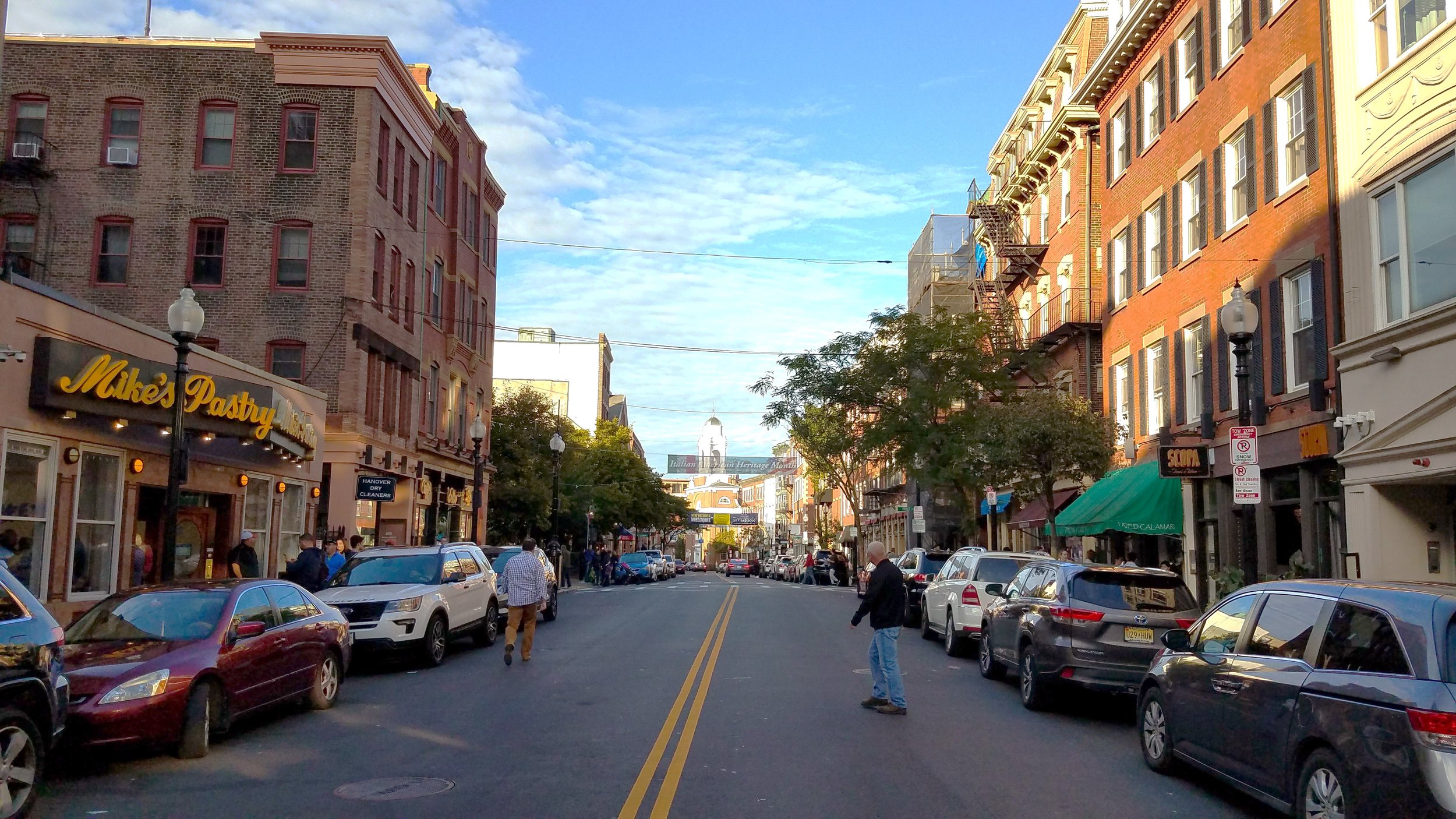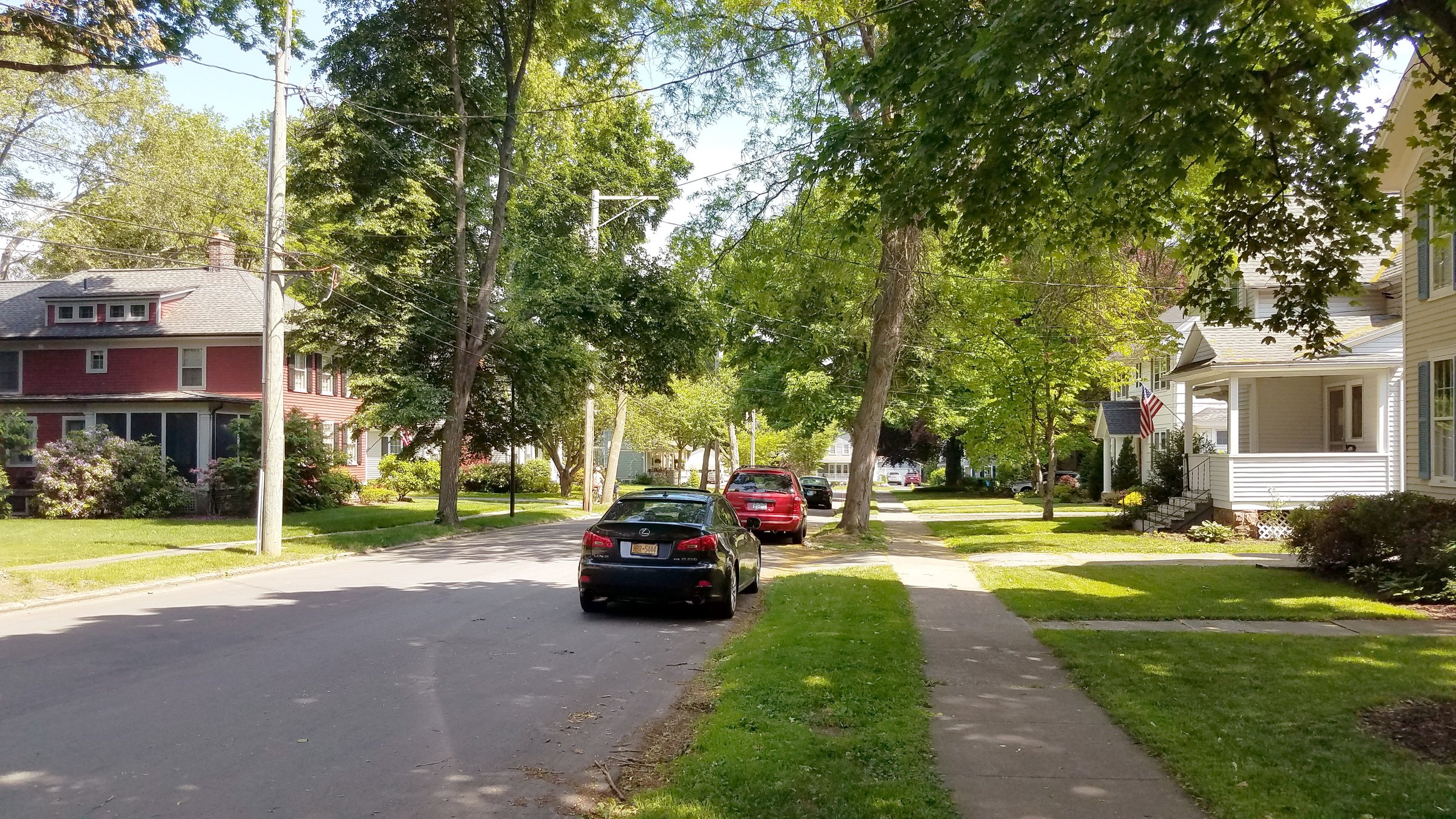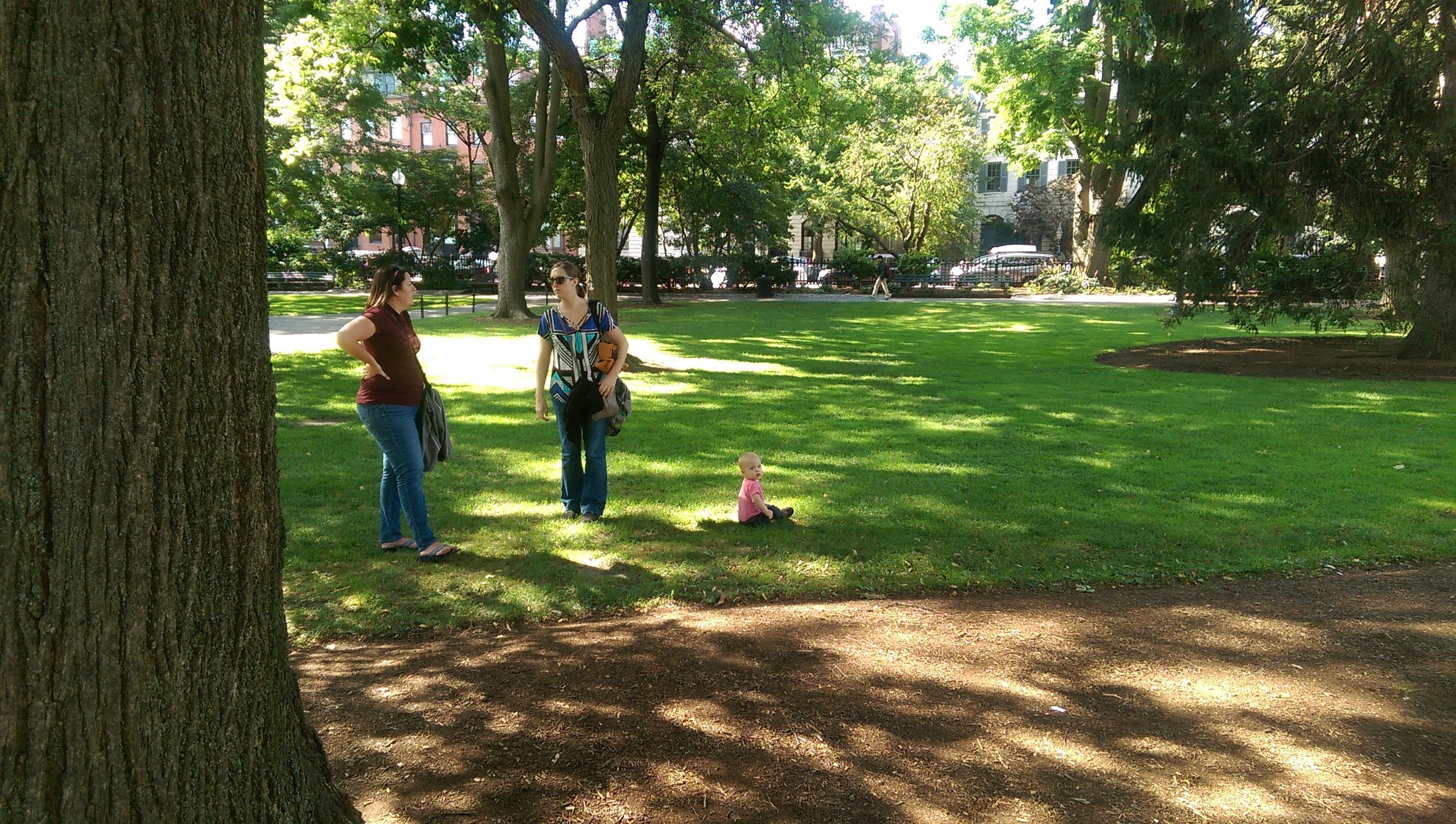Our cities, towns, and villages are for people.
BY ADAM BONOSKY
It sounds like a relatively straightforward sentence, and you may even be wondering why that was written. This becomes relevant when we see that we have been prioritizing cars in city planning since the mid-twentieth century. It was then that we started making our cities inhospitable to people walking by carving them up and wiping out whole neighborhoods for parking and highways, displacing people and businesses. The history of I-787 in Albany is testament to this. That is not to say that we should kick cars out, but that a balance needs to be struck so that we keep the places we live, work, learn, play, meet, and relax oriented toward people. So how do we do this?
Make Complete Neighborhoods
When neighborhoods can satisfy most of our daily needs, we increase the quality of life for residents. Neighborhoods that make it possible to age-in-place are beneficial to both the young and the old. Interaction with children has been proven to improve the mental and physical wellbeing of the elderly while improving social and emotional skills of young people. Neighborhoods with a range of housing options near places to work provide opportunities for people from all walks and stages of life.
How can we make a complete neighborhood? Complete neighborhoods are generally a 10-to-15-minute walk from one side to the other so you can easily walk or bike to most of your needs. They have an identifiable center – a main plaza, square, or park. There are a mix of uses; these can often be within a building that has commercial uses on the ground floor with residential uses above. There are mix of housing types to accommodate people from a range of stages in life. Complete neighborhoods are also made up of comfortable streets and a variety of great gathering spaces, large and small.
Make Them Walkable
Places that are walkable bring with them many benefits. People that live in walkable places tend to see greater physical and mental health. A recent study has found that children who grow up in walkable areas are more likely to see upward mobility than their peers. The Brookings Institution has also found that walkable places tend to perform better economically, even during downturns.
So, what exactly IS walkable? Places that are walkable have a well-connected street layout, meaning that they tend to have many streets and many intersections. The more options you have from point “A” to point “B”, the easier it is to get around. They are comfortable, meaning that walking is a pleasant experience; shade trees, plenty of sidewalk space, and architectural elements such as canopies or awnings protect people from the elements. They are shaped or defined. The proportions of the distance between buildings and their height have an effect on our perception of space and how comfortable we feel. The ideal proportions are somewhere between 1:1 and 1:3. They are safe. Bringing buildings closer to the street makes it easier for neighbors to know each other and see if someone needs help. Street lighting that is designed at a human scale (not the stuff you see on highways) makes navigating much easier at night. They are interesting. We like to look at stuff when we are walking. If the walk is boring, folks are less likely to get out. Finally, there are destinations. If there’s nowhere to go, fewer people will be walking.
Incorporate Nature
We should never take our eye off the importance of incorporating greenery and green spaces in the places that we live. Connecting ourselves to nature helps us in innumerable ways. Green Spaces give us places to relax, to play, and keep active. Studies have shown increased performance at workplaces, at school, and even when healing in our healthcare facilities when we merely have a view of green spaces. Green spaces also reduce a city’s impact on the environment. They help to capture carbon emissions and reduce stormwater runoff, lightening the demand on our stormwater systems and replenishing our natural water sources. They also help mitigate our urban heat island effect.
So how do we integrate greenery? First, we must remember that there are a range of green spaces that should be included. Among these are tot lots, parklets, playgrounds, squares, greens, sports parks, and regional parks. These should be evenly dispersed and easily accessible by all. This allows for access to green spaces from quick everyday activities to larger scale special events. Our thoroughfares should be lined with street trees. Finally, we should connect our untouched natural spaces and parks with green corridors to increase our access to nature and provide connected habitats for plants and animals.
Of course, there is more to this discussion and nuances that require conversations and input within each neighborhood and community. However, these three elements are essential to making our cities, towns, and villages oriented toward people and making places that we want to be. •
Adam Bonosky is a Senior Planner at SWBR and an Urban Guild member. As a certified planner and licensed architect, he has worked on planning and urban design efforts, and architectural projects around the U.S.




